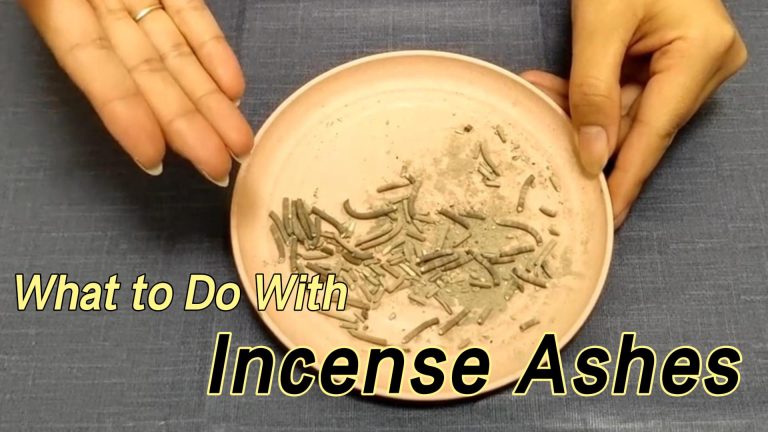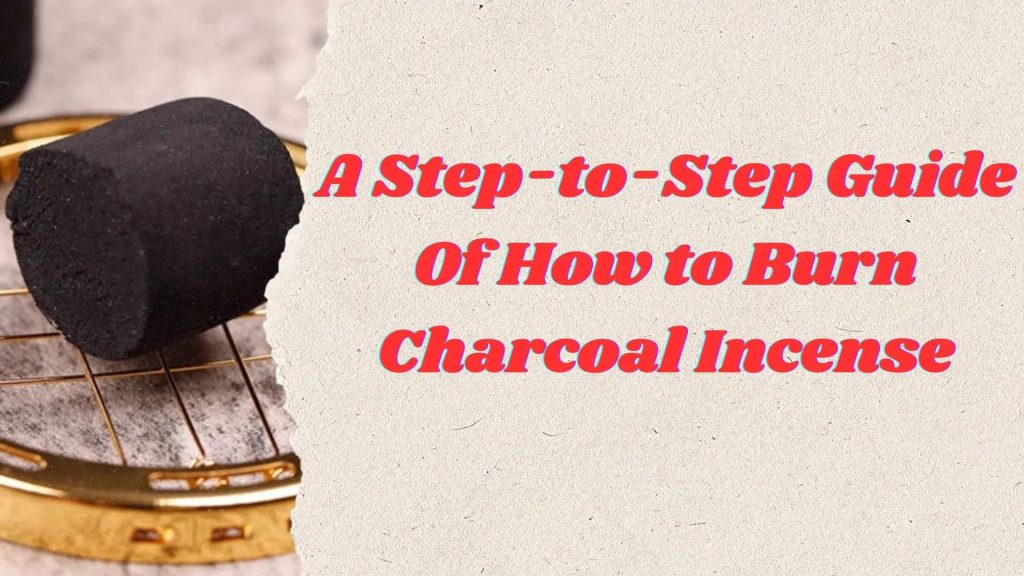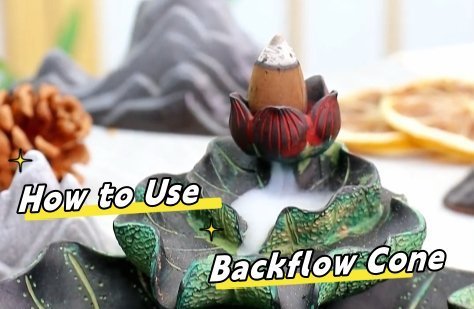Introduction
Burning incense is a common practice for creating a peaceful atmosphere, enhancing meditation, or simply adding a pleasant fragrance to your space. However, once the incense has burned out, you’re often left with a small pile of ashes. Instead of simply tossing them away, have you ever wondered what else you could do with those incense ashes? Whether you’re looking to reduce waste, find practical uses, or properly dispose of them, this guide will explore the various ways to handle incense ashes in an eco-friendly and thoughtful manner. This article will guide what to do with incense ashes, how to clean, dispose of and get rid of the leftover incense ashes.
Why You Cannot Throw Away Incense Ash Directly?
For many people, after their incense is burned, they directly throw away the incense ashes and get rid of them directly. However, it is not a wise decision. Here is why you cannot throw away incense ashes directly:
Environmental Consideration
Properly reusing or disposing of incense ashes is not just about cleanliness—it’s also a thoughtful approach to reducing waste. With environmental concerns growing, even small actions like reusing incense ashes can make a difference. Instead of adding to landfills, incense ashes can be repurposed in ways that benefit your home or garden, such as enriching soil for plants or helping to clean stainless steel surfaces.
Potential Benefits of Reusing
Reusing incense ashes can also provide practical benefits. Ashes are rich in certain minerals like potassium, making them an excellent natural fertilizer for flowers and plants. In addition, their fine texture makes them useful for cleaning tarnished metals or even repelling pests. By finding creative uses for incense ashes, you not only reduce waste but also gain handy, eco-friendly solutions for everyday tasks.
Avoiding Potential Hazards
Mindful disposal is equally important to prevent unnecessary mess or fire hazards. Ashes may seem harmless, but if they aren’t completely extinguished, they can pose a risk. Ensuring that the ashes are fully cooled and stored or discarded properly will keep your space safe and tidy
How to Safely Collect and Store Incense Ashes?
Safely collecting and storing incense ashes is essential not only for cleanliness but also for preventing accidents like fire hazards. Whether you’re planning to reuse the ashes or simply dispose of them, following proper collection and storage practices will help keep your space safe and organized. Here’s a detailed guide on how to do it.
1. Collecting Incense Ashes Safely
Use of Trays or Fireproof Containers:
Always burn your incense on a designated incense burner or fireproof tray. This prevents ashes from falling directly onto flammable surfaces. Ceramic, metal, or glass trays are excellent choices because they resist heat and will safely catch all the ashes. Make sure the tray or burner has a wide enough base to collect any stray ashes and prevent spills. Additionally, having a dedicated ash tray for this purpose ensures you can easily gather ashes for disposal or reuse later on.Incense Burners with Built-In Ash Catchers:
Many incense burners come with built-in ash catchers. These are specially designed to collect the ashes neatly, so they don’t scatter around your space. For backflow incense burners or stick burners, using a burner that directs all the ashes into a contained area will help you avoid making a mess while still preserving the ashes for other uses.Avoiding Ash Scattering:
When handling incense ashes, make sure there is minimal airflow in the area, as even a slight breeze can scatter the ashes. Burning incense in a controlled environment prevents the ashes from spreading across surfaces, making it easier to collect them afterward.
2. Storing Incense Ashes for Future Use
Choosing the Right Storage Container:
If you plan to reuse incense ashes for gardening, cleaning, or other purposes, it’s important to store them properly. Use a heat-resistant, airtight container such as a glass jar with a lid, metal tin, or a ceramic container. These materials will protect the ashes from moisture, preserving them in their dry form. Avoid using plastic containers, as they may melt if the ashes are still warm, and plastic is also less effective at preventing moisture buildup.Labeling for Easy Identification:
If you plan on reusing incense ashes for different purposes, it can be helpful to label your containers. For instance, you might want one jar of ashes specifically for gardening and another for cleaning tasks. Clear labeling avoids confusion and helps you access the right amount for each use without hassle.Keep Ashes Dry:
Incense ashes need to remain dry to be effective for most uses, especially for gardening and cleaning. Storing them in an airtight container ensures that no moisture gets in, which could render the ashes less effective or cause them to clump. Place the container in a cool, dry place away from any heat or humidity.
3. Caution: Ensure Ashes Are Fully Cooled Before Handling
Wait Until Completely Cool:
It’s crucial to let incense ashes cool down completely before handling or storing them. Even though they may appear harmless after the incense has burned out, ashes can retain heat for up to an hour or longer. To avoid burns or accidental fires, give them enough time to cool.How to Check if Ashes Are Safe to Handle:
After the incense has burned out, wait at least 30 to 60 minutes before attempting to collect the ashes. A good rule of thumb is to lightly touch the ash with the back of your hand or a metal tool (like a spoon) to ensure there’s no lingering heat. If the ashes still feel warm, give them more time to cool down.Proper Disposal of Hot Ashes:
If you suspect the ashes are still warm but need to dispose of them quickly, place them in a metal container that can safely withstand heat, such as a metal bucket or fireproof bin. Never dispose of warm ashes in a plastic bin or trash bag, as this can cause accidental melting or fires.
4. Additional Safety Tips
Keep Away from Flammable Objects:
When storing or handling incense ashes, always make sure they are far away from any flammable materials such as paper, fabric, or wooden surfaces. This will help you avoid accidents in case some ashes are still warm.Regular Maintenance of Burners:
To prevent buildup, regularly clean out the ash residue from your incense burners. This will not only keep your burners clean but also ensure safer burning for future use. Using a small brush or cloth to gently sweep out ash after every few uses will keep things tidy
By following these steps, you can safely collect and store incense ashes, ensuring they are properly handled and ready for reuse or safe disposal. This approach also minimizes fire risks and makes it easy to incorporate incense ashes into various everyday uses.
If you want to know how to use incenses, you can read our article How to Use Backflow Incense Cones.
Practical Uses for Incense Ashes
For people who wonder how to use incense ashes and what incense ashes can be used for, incense ashes might seem like mere residue, but they can be surprisingly useful in your daily life. From enriching your plants to cleaning surfaces or even repelling bugs, incense ashes can be repurposed in various practical ways. Below are some effective and easy-to-follow ideas for making the most of your incense ashes.
The above video gives an intro of three different ways to use incense ashes. Here is a detailed discussion of these three ways to do with the leftover incense ash:
1. Natural Fertilizer for Plants
Incense ashes are packed with minerals, especially potassium, which plays a crucial role in plant health. Potassium is essential for helping plants resist disease, regulating water absorption, and promoting the production of flowers and fruit. Incorporating incense ashes into your gardening routine is a sustainable way to nourish your plants without using chemical fertilizers.
Why It Works:
Potassium strengthens plant cell walls and enhances water and nutrient transport within the plant. This, in turn, improves overall plant health, resulting in more vibrant blooms, healthier foliage, and stronger roots. Incense ashes are an excellent source of this mineral and offer a natural way to boost plant vitality.How to Use as a Fertilizer:
- Wait until your incense ashes have completely cooled to avoid burning delicate plant roots.
- Take a small amount of ash, roughly a teaspoon for small plants or one tablespoon for larger garden plants.
- Gently sprinkle the ash on the soil around the base of your plants, taking care to avoid directly contacting the stems or leaves, which could lead to nutrient burns.
- Using your hands or a small garden tool, lightly mix the ashes into the top layer of soil, ensuring the nutrients can easily reach the plant roots.
- Afterward, water your plants lightly to help the ashes settle into the soil and activate their nutrients.
Best Uses:
- Flowers like roses and hibiscus thrive with the extra potassium boost.
- Herb gardens, especially potassium-hungry plants like tomatoes and peppers, benefit significantly from incense ash enrichment.
Tip: Use incense ashes sparingly. Too much can disrupt the soil’s pH, so apply once every few weeks for optimal results
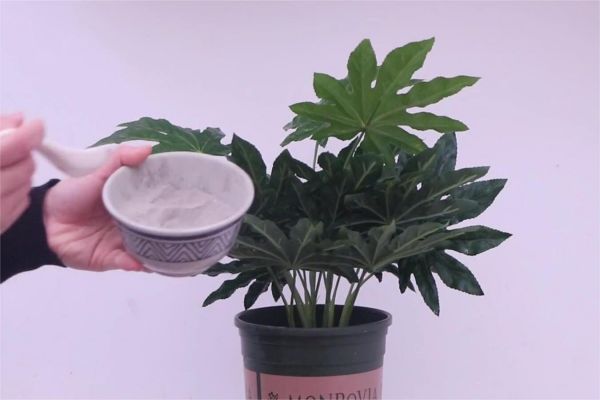
2. Cleaning Agent for Metal or Stainless Steel
One of the lesser-known benefits of incense ashes is their usefulness as a natural cleaning agent. Thanks to their mild abrasive texture, incense ashes are excellent for scrubbing tarnished metal surfaces without causing damage or scratches. This makes them a great solution for cleaning stainless steel, silverware, metal kitchen appliances, and even copper items.
Why It Works:
The fine, powdery texture of incense ashes acts as a gentle abrasive that helps break down and lift away grime, stains, and tarnish. Unlike commercial cleaning agents, which may contain harsh chemicals, ashes provide a more natural way to clean delicate surfaces without leaving residue or damaging the finish.How to Clean with Incense Ashes:
- Gather your materials: Cool incense ashes, a soft damp cloth or sponge, and a clean, dry towel.
- Sprinkle a small amount of incense ashes directly onto the tarnished or dirty metal surface. For stainless steel, target areas with water spots, grease, or discoloration.
- Use a damp cloth or sponge to gently rub the ashes into the surface, using small, circular motions. The mild abrasiveness of the ashes will help lift the grime without scratching the surface.
- Continue scrubbing until the tarnish or dirt begins to fade. Add a bit more ash as needed for tougher spots.
- Once the area is clean, rinse with clean water to wash away any ash residue.
- Dry thoroughly with a soft towel to prevent water spots from forming.
Best Uses:
- Stainless steel kitchen sinks: Ashes effectively remove water spots and tarnish.
- Tarnished silverware: Incense ashes can gently clean without harming the finish.
- Copper and brass items: Ashes help restore the shine to these metals.
Tip: Test on a small, hidden area first to ensure compatibility with the material, especially for antique or valuable items
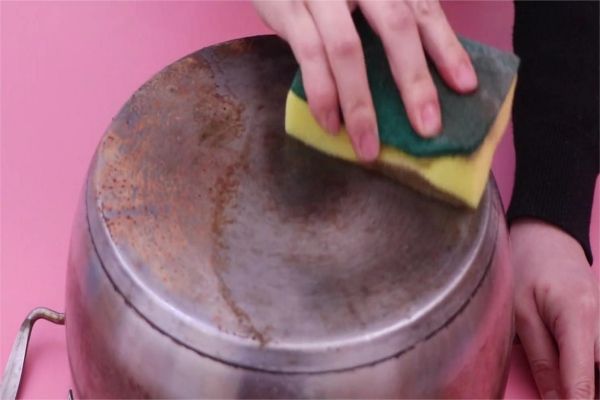
3. DIY Natural Bug Repellent
If you’re looking for a natural and non-toxic way to keep cockroaches, ants, and other pests out of your home, incense ashes can be a surprisingly effective solution. By combining ashes with bait like bananas, you can create a simple homemade repellent that attracts bugs but ultimately helps eliminate them.
Why It Works:
Bugs like cockroaches and ants are attracted to sweet scents, such as bananas. However, when mixed with incense ash, the bait becomes lethal once consumed. The fine ash can irritate their digestive systems or act as a natural deterrent, helping you control infestations without the use of harmful chemicals.How to Make and Use Natural Bug Repellent:
- Prepare your ingredients: Slice a ripe banana (or use any sweet fruit that attracts bugs).
- Sprinkle incense ash over the banana slices. Use enough ash to lightly coat the fruit, but not so much that it forms a thick layer.
- Mix the banana and ashes together until the ash is evenly distributed.
- Place the mixture in a small dish or shallow container and set it in areas where bugs are frequently seen, such as in corners, under cabinets, or near trash bins.
- Let the mixture sit overnight, checking the area regularly for any signs of pests. The scent of the banana will attract bugs, and once they consume the ash, it will disrupt their system, eventually eliminating them.
Best Uses:
- Cockroaches: The mixture is especially effective in areas like kitchens or basements, where cockroaches are common.
- Ants: Place the mixture near entry points or along trails where ants are spotted.
- Other crawling bugs: This method can also help deter spiders or other small pests.
Tip: Place the repellent in out-of-reach areas to avoid disturbing pets or children, and replace the mixture regularly to maintain its effectiveness
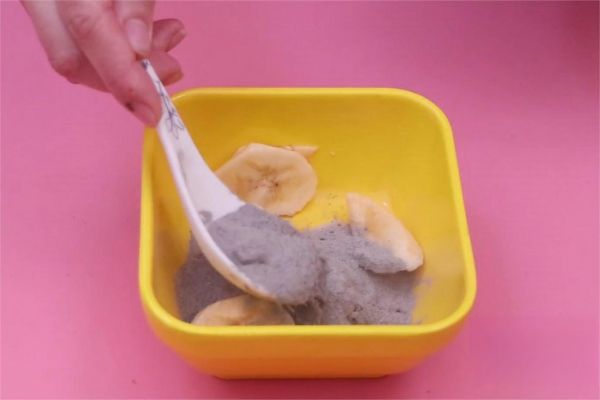
By finding practical uses for incense ashes, you can turn what is often considered waste into a valuable resource. Whether helping your plants thrive, cleaning up metal surfaces, or keeping bugs at bay, these easy-to-follow methods make incense ashes a versatile tool for everyday life
How to Properly Dispose of Incense Ashes
If you don’t plan to reuse your incense ashes, it’s important to dispose of them in a safe and environmentally responsible way. Improper disposal can lead to fire hazards or unnecessary waste, so understanding the best practices for disposing of incense ashes is essential. Here are the key methods for proper disposal
1. Composting: Adding Ashes to Compost Piles
One of the most eco-friendly ways to dispose of incense ashes is to add them to your compost pile. Incense ashes contain potassium, a beneficial mineral for plants, making them a great addition to compost when used in moderation. However, there are limits to how much ash you should add, as too much can alter the pH balance of your compost.
- Best Practices for Composting Incense Ashes:
- Check the quantity: Only add a small amount of incense ash to your compost pile at a time. Generally, about one teaspoon of ash per square foot of compost is sufficient.
- Balance with other compost materials: Since ashes are alkaline, it’s essential to balance them with plenty of nitrogen-rich materials like kitchen scraps, grass clippings, and green plant matter to maintain the right pH level for composting.
- Mix the ashes in: Lightly mix the ashes into the compost pile using a rake or shovel. This helps ensure even distribution and prevents clumping.
Tip: Avoid adding incense ashes to compost piles if they contain chemicals or synthetic fragrances, as these may not break down properly and could harm your plants.
2. Trash Disposal: Safe Disposal Methods
If you don’t have a compost pile or prefer not to reuse incense ashes, you can dispose of them in the trash. However, it’s important to do so safely to avoid creating fire hazards or messes.
- Steps for Safe Trash Disposal:
- Ensure ashes are fully cooled: Incense ashes can retain heat for a long time after burning, so it’s essential to wait until they are completely cool. Allow at least an hour for cooling after the incense has burned out.
- Use a fireproof container: If the ashes are still warm but need to be discarded, place them in a metal container with a lid before transferring them to the trash. This will prevent any risk of igniting other materials in the trash.
- Seal in a bag: Once ashes are fully cooled, place them in a sealed plastic or paper bag before putting them in the trash. This prevents them from scattering and keeps the disposal process clean.
Tip: If you’re disposing of large amounts of incense ashes, consider distributing them over multiple trash bags or bins to avoid overloading any one bag with ashes
3. Avoiding Fire Hazards: Ensuring Ashes Are Extinguished
Proper disposal of incense ashes isn’t just about cleanliness—it’s about safety too. Ashes can easily retain enough heat to spark a fire if not handled properly, so taking precautions before disposing of them is crucial.
- Tips for Avoiding Fire Hazards:
- Always wait until ashes are cool: As mentioned earlier, incense ashes should be given ample time to cool down completely before being moved or disposed of. Even if the ashes appear harmless, there could be embers hidden inside.
- Use water if necessary: If you’re in a rush or unsure if the ashes are fully extinguished, you can lightly sprinkle water over the ashes to ensure there are no embers left. Let them dry before placing them in the trash.
- Avoid disposing of ashes near flammable materials: Keep incense ashes away from paper, cloth, and other easily flammable objects, especially while they are still in the cooling process.
- Never use plastic bags for warm ashes: Even slightly warm ashes can melt or ignite a plastic bag, creating a serious fire hazard
By following these methods for composting, trash disposal, and fire prevention, you can safely and responsibly dispose of your incense ashes, protecting both your home and the environment. Proper disposal practices not only help prevent fires but also contribute to a more sustainable lifestyle
Conclusion
Whether you’re composting them or ensuring safe trash disposal, handling incense ashes mindfully helps reduce waste and prevents potential fire hazards. By integrating these practices into your routine, you not only make the most of your incense but also contribute to a cleaner, more sustainable living environment. So next time your incense burns out, think twice before tossing the ashes away—there’s always a useful purpose they can serve
FAQ
Yes, incense ash can be beneficial for plants when used in moderation. It contains potassium, an essential nutrient that plays a key role in strengthening plant roots, improving water regulation, and promoting flower and fruit production. Potassium is particularly important for flowering plants and those that require a higher level of this nutrient to thrive. However, while incense ash can act as a natural fertilizer, it’s important to use it sparingly. Overloading the soil with ashes can increase its alkalinity, which may affect the pH balance and harm plants sensitive to higher pH levels. For best results, lightly sprinkle the ash on top of the soil and mix it in, allowing the nutrients to be absorbed by the plants without overwhelming the soil
Yes, incense ash can serve as a natural fertilizer due to its mineral content, particularly its high concentration of potassium. This makes it an excellent addition to the soil for flowering plants, herbs, and vegetables like tomatoes, which benefit from potassium-enriched soil. To use incense ash as fertilizer, wait until the ashes have completely cooled and then sprinkle a small amount directly into the soil. It’s important to mix the ash into the top layer of soil to ensure the nutrients are evenly distributed and can be easily absorbed by the plants. Be cautious not to overapply, as too much ash can alter the pH of the soil and potentially harm plants, especially those that prefer more acidic conditions. Use ash periodically to maintain the health of your plants without overloading the soil
To make white ash for incense burning, you’ll need to use clean, natural materials that burn without leaving behind residue or discoloration. Traditional materials for creating white ash include rice straw, dried bamboo, and natural wood chips. These materials burn cleanly and consistently, producing a soft, light-colored ash that is often preferred in spiritual practices for its purity. To make white ash, burn these materials in a controlled environment, such as an incense burner or fireproof tray, and collect the ashes after they’ve fully cooled. White ash is commonly used in incense burners, especially in Japanese and Chinese rituals, to maintain a clean, aesthetically pleasing environment for meditation or offerings. The ash can be spread evenly across a burner to support incense sticks, cones, or charcoal, creating a smooth surface for burning
No, you should not smoke incense ash. Incense ash is the byproduct of burned materials, such as plant matter, wood, resins, and sometimes synthetic fragrances. The ashes contain charred remains of these materials, which are not intended for human consumption or inhalation. Smoking incense ash could expose you to harmful particles and chemicals that could irritate your lungs or cause respiratory issues. Inhalation of such particles could lead to discomfort, coughing, or more serious health problems if done regularly. Incense is meant to be enjoyed for its fragrance and calming effects, not for consumption. It’s always best to dispose of incense ash properly or reuse it for safe, practical purposes, such as fertilizing plants or cleaning
No, incense ash is generally not considered poisonous or toxic when handled properly. It is mainly composed of burned plant materials, resins, and natural compounds. However, it can still contain harmful residues, especially if the incense contains synthetic fragrances or chemicals. While it is safe for common uses like gardening or cleaning in small amounts, it should never be ingested or inhaled directly. Always use caution and ensure the ashes are fully cooled before handling to avoid any potential risks
To catch incense ash, you typically use an incense ash catcher or incense burner. These are designed to hold incense sticks, cones, or backflow incense while safely collecting the ashes that fall as the incense burns. Ash catchers come in various materials such as wood, ceramic, metal, or stone. For stick incense, a long, flat ash catcher with a groove or small hole to hold the stick works best. For cone incense, a dish or bowl-shaped burner is ideal. If you’re using backflow incense cones, a specialized backflow burner is used to catch the ash while creating a visual smoke effect. The key is to ensure the catcher is large enough to hold the ashes and heat-resistant to prevent damage or fire hazards

